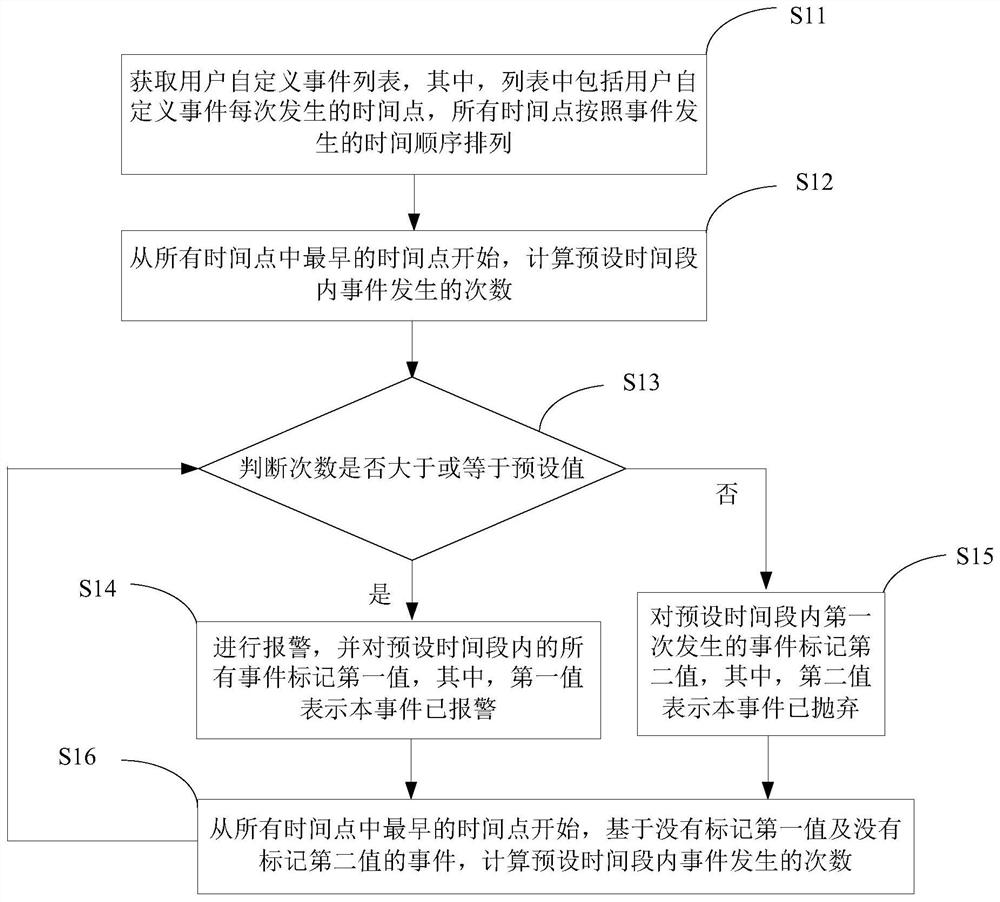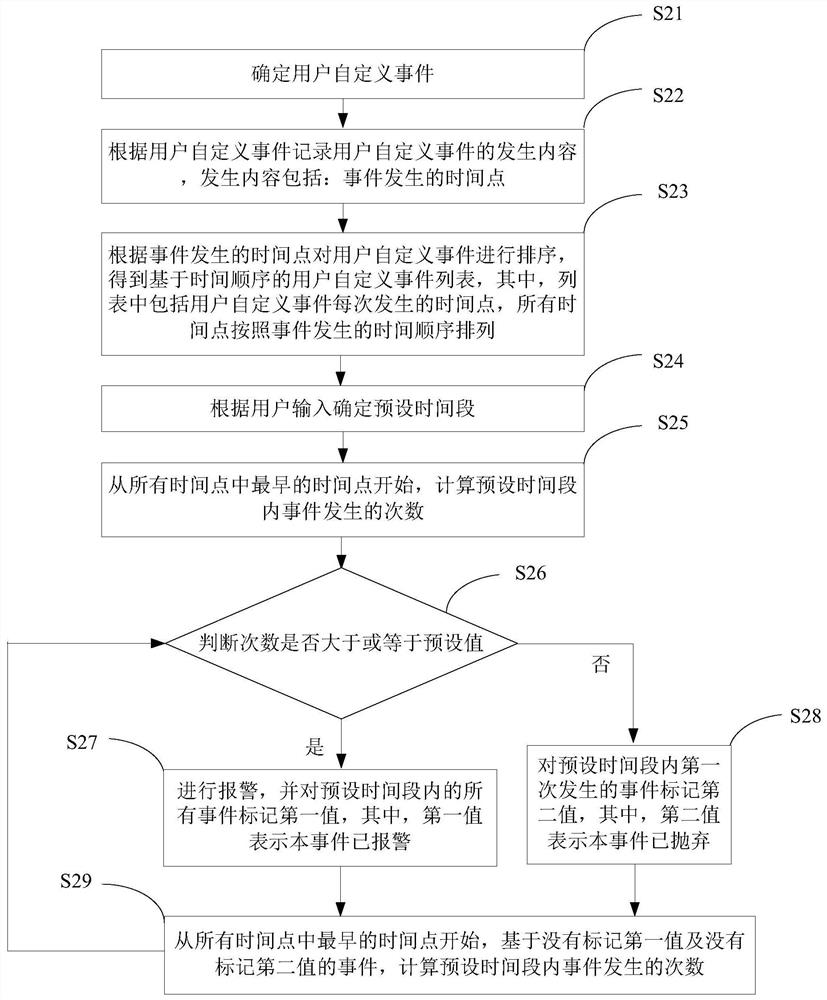User-defined event alarm method and system based on time sliding window
A user-defined, sliding window technology, applied to alarms, instruments, etc., can solve the problem that event alarm methods are prone to false negatives and other problems
- Summary
- Abstract
- Description
- Claims
- Application Information
AI Technical Summary
Problems solved by technology
Method used
Image
Examples
Embodiment 1
[0049] A user-defined event alarm method based on a time sliding window provided by an embodiment of the present invention, such as figure 1 shown, including:
[0050] S11: Obtain a list of user-defined events, where the list includes the time points at which the user-defined events occur each time, and all time points are arranged according to the time sequence of events occurring.
[0051] S12: Starting from the earliest time point among all the time points, count the number of events occurring within the preset time period.
[0052] As a preferred implementation of this embodiment, step S13 to step S16 are cyclically executed:
[0053] S13: Determine whether the number of times is greater than or equal to a preset value, if yes, go to step S14; if not, go to step S15.
[0054] S14: Carrying out an alarm, and marking all events within a preset time period with a first value, wherein the first value indicates that the event has been alarmed.
[0055] S15: Mark a second val...
Embodiment 2
[0060] A user-defined event alarm method based on a time sliding window provided by an embodiment of the present invention, such as figure 2 shown, including:
[0061] S21: Determine a user-defined event.
[0062] First, define a custom event type, for example, define the event type type that triggers an alarm, assuming that type is high risk, where the time type type includes but is not limited to one.
[0063] S22: Record the occurrence content of the user-defined event according to the user-defined event, and the occurrence content includes: the time point when the event occurs.
[0064] Then, access the log source, where the log source is the log generated by the device, that is, the processing record of the event when the device is running. It should be noted that any processing record includes but is not limited to event ID, processing record, event type, and occurrence time. Therefore, the list also includes: at least one of event ID, event processing record and eve...
Embodiment 3
[0085] A user-defined event alarm system based on a time sliding window provided by an embodiment of the present invention, such as image 3 As shown, the user-defined event alarm system 3 based on a time sliding window includes: an acquisition unit 31 , a calculation unit 32 , an alarm unit 33 , a first marking unit 34 and a second marking unit 35 .
[0086] In a practical application, the obtaining unit is used to obtain a list of user-defined events, wherein the list includes the time points at which the user-defined events occur each time, and all time points are arranged according to the time sequence of events occurring. The list also includes: at least one of event ID, event processing record and event type.
[0087] Further, the calculation unit is used to calculate the number of occurrences of events within a preset time period starting from the earliest time point among all time points. The alarm unit is used for alarming if the number of times is greater than or eq...
PUM
 Login to View More
Login to View More Abstract
Description
Claims
Application Information
 Login to View More
Login to View More - R&D
- Intellectual Property
- Life Sciences
- Materials
- Tech Scout
- Unparalleled Data Quality
- Higher Quality Content
- 60% Fewer Hallucinations
Browse by: Latest US Patents, China's latest patents, Technical Efficacy Thesaurus, Application Domain, Technology Topic, Popular Technical Reports.
© 2025 PatSnap. All rights reserved.Legal|Privacy policy|Modern Slavery Act Transparency Statement|Sitemap|About US| Contact US: help@patsnap.com



